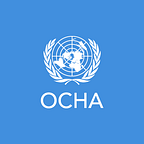THE INVISIBLE MAJORITY: HELPING INTERNALLY DISPLACED PERSONS
An open letter by OCHA, UNDP, IRC, NRC and the Special Rapporteur on the Human Rights of Internally Displaced Persons
In recent years, we have been haunted by images of refugees, asylum seekers and vulnerable migrants forced to embark on perilous journeys. Confronting this human suffering rightfully demands our attention. The adoption of the New York Declaration on Refugees and Migrants earlier this week is an important milestone in that endeavor. We would like to command the leadership of all those who have helped achieve such great success; their continued engagement will remain essential to ensure that concrete actions in support of refugees and migrants follow the adoption of the declaration. We were heartened by the fact that people on the move featured prominently in other key discussions during the General Assembly, in particular at the High Level meetings on Syria, Yemen, Iraq and South Sudan.
Yet the vast majority of people who have currently been forced from their homes have not yet crossed international borders. They too have fled armed conflict, violence or disasters. However, because they’ve been displaced within their own countries, their stories have not been told. Instead, their plight is often forgotten.
Today, of the 65.3 million people forcibly displaced around the globe, 40.8 million or more than six out of ten are internally displaced persons (IDPs). They are the invisible majority of displaced persons.
We are all aware of the tragic death of three year-old Aylan Kurdi, the Syrian toddler whose body washed up on a beach in Turkey. The horrific photo shared around the world showed the ordeal faced by so many refugees. But when Aylan and his family first fled their home, they moved several times seeking safety within Syria. It was only the lack of support and dire conditions that finally forced the family to undertake their most dangerous journey and flee the country, with tragic consequences.
It would be a great failure of humanity to limit whom we help based on lines on a map. Our work is guided by humanity and humanity has no borders. We must do all we can to ensure that no group is neglected. We must leave no one behind. This was the world’s pledge through the 2030 Agenda for Sustainable Development and the Agenda for Humanity. There can be no sustainable development if the more than 40 million internally displaced people are left behind.
When people flee their homes, they often hope to return within days or weeks. In reality, for most of them it takes years or even decades as conflict, destruction or occupation drags on, or due to fear of harassment or attack, lack of economic opportunity and other factors. Many soon slide into poverty, having sold jewelry or other assets and with few opportunities to support their families. They become particularly vulnerable to extortion, discrimination and abuse. Internal displacement often marks the beginning of a long struggle at the bottom or in the margins of society.
Tackling this reality requires stepping up efforts to meet the immediate protection and assistance needs of IDPs, but also addressing the long-term political and development challenges resulting from internal displacement. To give internally displaced people the chance to return to a dignified life, they must have full freedom of movement, access to basic services, labour markets, health, education, adequate housing, sustainable livelihoods and secure land tenure. We must drive towards real, measurable improvements in their lives in the form of specific outcomes in health, education, economic well-being and safety. This requires strong leadership from national Governments. International organisations and bi-lateral partners must support those efforts to reduce protracted displacement and not only “manage” caseloads.
Urgent action is needed to find a consistent and collective vision for addressing the long-term needs of internally displaced persons and supporting the communities that host them. This work must comply with international conventions and be underpinned by strong national policies and comprehensive and appropriate international assistance. The UN Secretary-General has called for renewed efforts to prevent internal displacement, address the root causes and support safe, dignified and durable solutions for internally displaced people, with the aim of halving internal displacement globally by 2030. The New York Declaration for Refugees and Migrants also recognizes the plight of those displaced within national borders and notes the need for protection and assistance and prevention of displacement in the first place. To achieve this, the world must immediately do more to support IDPs and the communities that host them.
We urge governments, world leaders, thought leaders and the public to unite behind this cause. We should come together next year to propose better ways to prevent internal displacement and support the invisible majority of displaced people. Until then, we also call on leaders and members of the public to keep the spotlight of our compassion on the internally displaced, alongside refugees and migrants.
